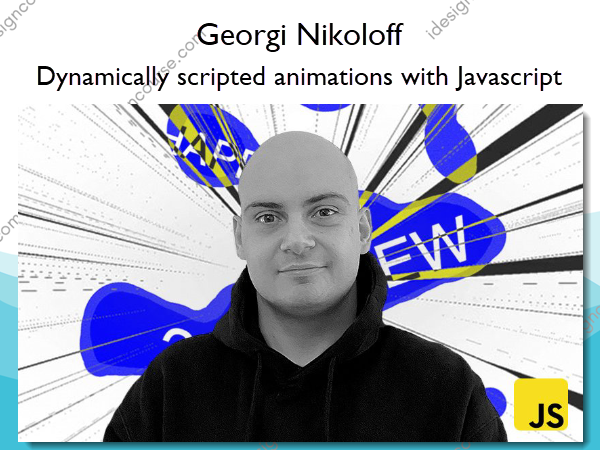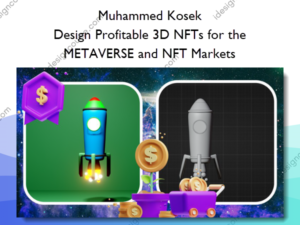Dynamically scripted animations with Javascript – Georgi Nikoloff
$100.00 Original price was: $100.00.$40.00Current price is: $40.00.
»Delivery: Within 24 hours from payment
Description
 Dynamically scripted animations with Javascript Information
Dynamically scripted animations with Javascript Information
Dynamically Scripted Animations with JavaScript is designed for beginner to intermediate frontend developers who want to gain a deeper understanding of animation principles and how to implement them using JavaScript.
We all know what CSS easing is, but how do you implement one yourself? Instead of jumping to a physics library immediately, how about implementing the collision detection yourself? How about learning how to handle user interactions via the keyboard, mouse, and touchscreen to control your animation?
In this course you’ll learn how to create interactive animations for the web using computer code and math. You’ll gain new tools to express yourself creatively and discover the theory and principles behind motion. You’ll see these concepts and formulas working in real-time, right in front of you in your browser.
This course provides a gentle introduction to core math theory needed to create smooth and realistic motion using Javascript and the HTML5 canvas element. It covers physics formulas like acceleration, velocity, easing, springing and collision detection, while aiming for smooth and engaging animations, not scientifically correct visualizations.
In a world full of Javascript libraries, this course will be of great use for people who want to understand it on a deeper level. These animation principles are timeless and can be applied to any environment, such as HTML, SVG or even 3D with WebGL.
This course is for beginner to intermediate frontend developers, some basic JS knowledge is required.
Here’s what you’ll learn
- Lesson 1: Welcome
- Lesson 2: Basic trigonometry
- Lesson 3: Velocity and Acceleration
- Lesson 4: Boundaries and friction
- Lesson 5: Easing and springing
- Lesson 6: Collision detection
- Lesson 7: Conclusion
More courses from the same author: Georgi Nikoloff
Salepage: Dynamically scripted animations with Javascript – Georgi Nikoloff
Delivery Policy
When will I receive my course?
You will receive a link to download your course immediately or within 1 to 21 days. It depends on the product you buy, so please read the short description of the product carefully before making a purchase.
How is my course delivered?
We share courses through Google Drive, so once your order is complete, you'll receive an invitation to view the course in your email.
To avoid any delay in delivery, please provide a Google mail and enter your email address correctly in the Checkout Page.
In case you submit a wrong email address, please contact us to resend the course to the correct email.
How do I check status of my order?
Please log in to iDesignCourse account then go to Order Page. You will find all your orders includes number, date, status and total price.
If the status is Processing: Your course is being uploaded. Please be patient and wait for us to complete your order. If your order has multiple courses and one of them has not been updated with the download link, the status of the order is also Processing.
If the status is Completed: Your course is ready for immediate download. Click "VIEW" to view details and download the course.
Where can I find my course?
Once your order is complete, a link to download the course will automatically be sent to your email.
You can also get the download link by logging into your iDesignCourse account then going to Downloads Page.











